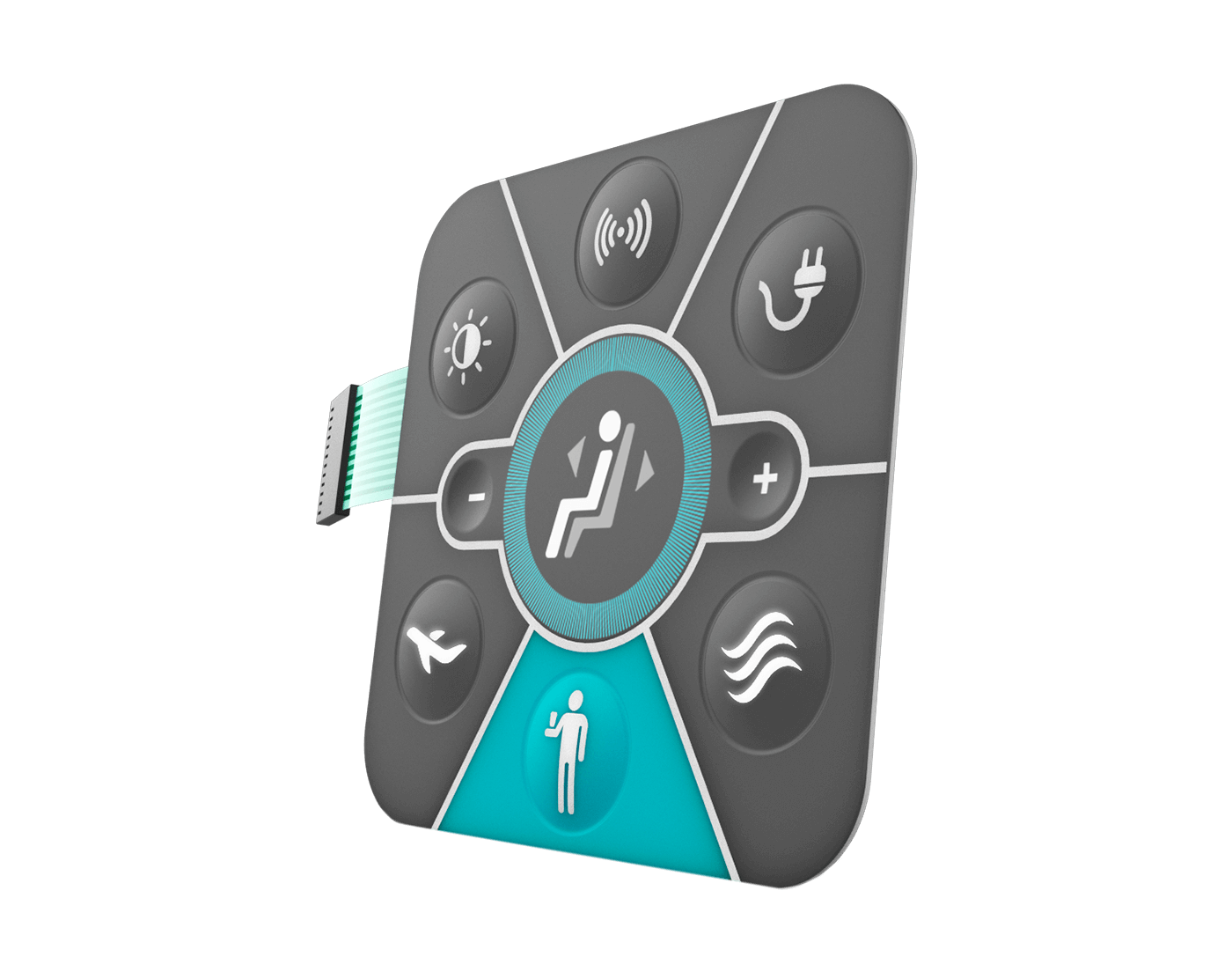Recognizing the Importance of Membrane Switches in Customer User Interfaces
Membrane buttons are integral elements in the design of effective interface, promoting not just capability yet additionally boosting visual charm and individual interaction. Their distinct features, such as resistance to personalized layouts and ecological elements, make them suitable for a diverse selection of applications throughout several markets. As we explore the various benefits and future patterns connected with Membrane technology, it comes to be clear that these switches are greater than just parts; they represent a convergence of technology and functionality. The implications of this modern technology on individual experience are worth examining additionally.
What Are Membrane Switches?

The spacer layer, which contains adhesive residential properties, allows for the splitting up of the circuit layer from the overlay, making sure that the button stays in a non-activated state till pressed. When pressure is applied to the overlay, it compresses the spacer layer, bridging the gap and finishing the circuit in the underlying layer. This style not only reduces the physical area needed for typical mechanical buttons but also improves the resilience of the device, as Membrane switches are generally immune to dirt, moisture, and other environmental factors.
Frequently found in applications ranging from consumer electronics to clinical tools, Membrane buttons are indispensable to contemporary innovation, offering a reliable and straightforward user interface that lines up with modern layout requirements.
Benefits of Membrane Switches
While various button technologies exist, Membrane Switches offer distinct advantages that make them especially preferable in numerous applications. One of the key benefits of Membrane buttons is their small layout, which permits for space-saving applications in devices where property is restricted. Their thin profile not only enhances visual appeal but also assists in light-weight construction.
One more significant advantage is their resistance to ecological elements. Membrane switches are usually secured against dampness, dirt, and contaminants, making them optimal for use popular atmospheres, such as clinical gadgets and commercial devices. This sturdiness prolongs the life-span of the button, reducing maintenance costs and improving integrity.
Moreover, Membrane buttons can be customized to fulfill certain design needs, integrating unique graphics and colors that enhance user interaction. Their tactile feedback choices can additionally be customized to offer an enjoyable individual experience. Furthermore, Membrane buttons are economical, especially in high-volume applications, as they can be created efficiently.
Applications in Various Industries

In the customer electronics field, Membrane buttons prevail in tools such as microwaves, washing makers, and remote controls. Their responsive comments and visual choices improve individual experience while providing a streamlined, modern look. Furthermore, automotive suppliers utilize Membrane buttons in dashboard controls and infotainment systems, where area is restricted, and individual interaction is essential.
In addition, the commercial industry leverages Membrane switches in control panels for machinery and devices, enabling intuitive operation in commonly severe environments. Their resistance to chemicals and wetness makes sure durability and reliability in these applications. Generally, the versatility of Membrane Switches adds dramatically to their widespread usage, making them indispensable in various technical domain names.
Style Considerations for Membrane Buttons

When creating Membrane switches, he said numerous crucial factors to consider have to be taken into consideration to ensure optimum functionality and individual experience. The option of materials is critical; picking durable, top quality substrates can enhance the switch's longevity and resistance to environmental elements such as moisture and temperature level changes.
Second of all, the design of the visuals overlay must focus on quality and convenience of usage. Icons and text must be legible, and the layout ought to assist in intuitive interaction (membrane switches). In addition, responsive responses is crucial; integrating a tactile dome or various other systems can improve the individual experience by giving physical confirmation of activation
One more crucial factor is the switch's electric efficiency. Developers need to make certain that the conductive traces are properly designed to decrease resistance and avoid signal disturbance. This entails evaluating the called for actuation force and making certain compatibility with the electronic components they will certainly interface with.

Future Fads in Membrane Technology
As technology remains to breakthrough, Membrane switches are poised to progress substantially, driven by innovations in materials and making strategies. One arising fad is the incorporation of sophisticated materials, such as conductive inks and adaptable substratums, which improve durability and reduce the general weight of Membrane switches. These materials not only boost the tactile feedback but additionally permit the design of switches that can stand up to harsher ecological conditions.
In addition, the integration of touch-sensitive technologies is transforming conventional Membrane Switches into more interactive individual interfaces. Capacitive touch sensors embedded within Membrane button panels can offer an extra user-friendly and receptive user experience, aligning with the growing need for smooth, modern-day layouts in consumer electronics.
Additionally, advancements in printing strategies, such as digital and 3D printing, make it possible for quick prototyping and modification of Membrane buttons. This flexibility permits manufacturers to react faster to market demands and customer preferences.
Last but not least, sustainability is becoming a considerable emphasis, with producers discovering eco-friendly products and processes. As these patterns unfold, the future of Membrane innovation assures boosted functionality, aesthetic allure, and environmental obligation, solidifying their function in sophisticated user interfaces across numerous sectors.
Verdict
In verdict, Membrane Switches stand for a crucial element in the style of interface, integrating functionality with aesthetic flexibility. Their benefits, including sturdiness and resistance to ecological aspects, make them appropriate for varied applications across various industries. Thoughtful design factors to consider improve customer interaction and experience. As innovations in innovation proceed, the advancement of Membrane buttons is anticipated to additional fine-tune customer interfaces, driving innovation and improving functionality in a progressively complicated technical landscape.
Membrane switches are important elements in the style of efficient user interfaces, facilitating not only functionality but likewise enhancing aesthetic charm and user interaction.Membrane Switches serve as a crucial part in different customer interfaces, helping with a smooth interaction between customers and electronic devices.While various button technologies exist, Membrane Switches offer distinct benefits that make them particularly desirable in various applications.Furthermore, Membrane switches can be personalized to satisfy specific design requirements, including unique graphics and shades that improve user communication.In conclusion, Membrane Switches stand for a crucial element in the layout of customer interfaces, combining performance with aesthetic versatility.